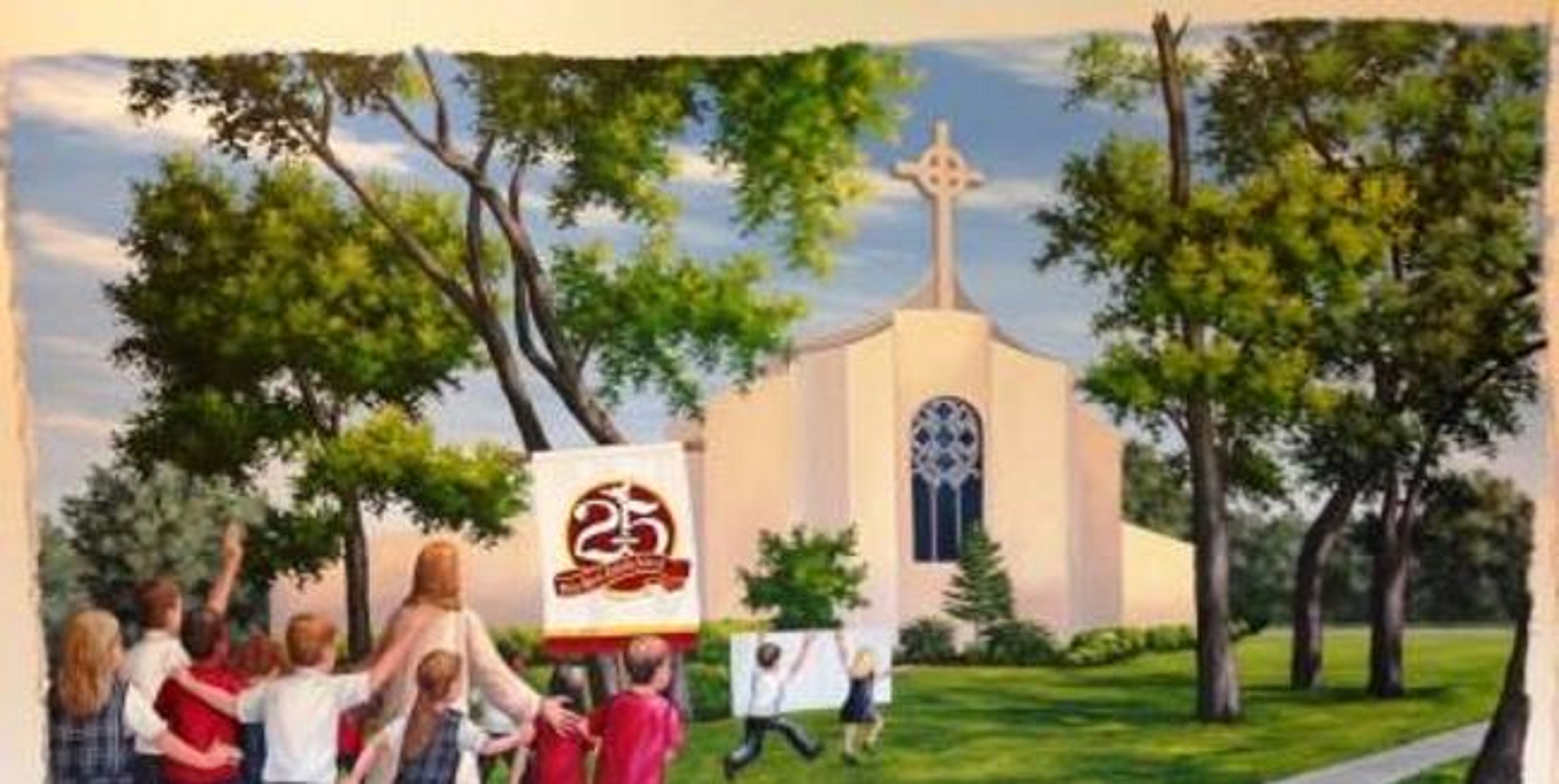The history of Holy Spirit’s faith community parallels Fort Caroline’s transformation, growing from a population of about 60 families when the parish was carved from Resurrection Parish in 1966, to 1,400 families in 2005. The first church, now used as a school cafeteria and meeting space, was dedicated in 1971. Since then, Holy Spirit, like other suburban Jacksonville parishes, has been in a building mode, adding a rectory, a second church, a school and a combination gymnasium and social hall that will open this fall. Beginning in 1992, Mass has been held in the new church, a large, handsome structure with a high angled ceiling and a fair share of diocesan history: The arresting stained glass windows on the wall behind the altar are from the old Holy Rosary Church on Laura Street – as are the bas relief Stations of the Cross that adorn the side walls. Also of interest is a statue of the Blessed Kateri Tekakwitha in full Mohawk dress at the back of the church. This, says Msgr. Heslin, was a gift from a parishioner. It’s not the only Native American connection at Holy Spirit. “Years ago, Timucuan Indians lived along the river here,” says Msgr. Heslin. “When we started digging the parking lot for the new church, we ran into a problem. Twenty-three human remains from those ancient times were eventually exhumed by the state and moved to Tallahassee at parish expense.
A diverse community united by common goals Holy Spirit is an enthusiastic, energetic parish, with a good mix of young families and older parishioners, notes John Luciano, Ph.D., principal of Holy Spirit Catholic School. “It’s a very supportive environment,” he says, “and the parish takes an unprecedented interest in having a good school.” This focus, he adds, starts at the top: “Msgr. Heslin believes in us. For him, the primary purpose of the parish is the operation of this school. He doesn’t want it to be elitist. He wants to keep it very affordable for that single mother out there who wants to put her child with us. At the same time, we’re able to offer a quality, fully accredited program. For example, right now, 80 percent of faculty members hold master’s degrees.” Peter Strandes, president of the Men’s Club, credits the school’s success to good leadership: “Msgr. Heslin feels that the school and youth of our parish are our future, and Luciano does a fantastic job. We’re all really proud of what we’ve got here. Supporting a school and the parish’s other ministries requires considerable effort.
Fortunately, Holy Spirit is blessed with hard workers. Among them is a sizable population of Filipino parishioners. “Although they’re in the minority here, you wouldn’t know it if you could see how much they do,” says Strandes. “Our Filipino groups love to party and they love to contribute to the parish,” adds Msgr. Heslin. Unlike in many Jacksonville parishes, Holy Spirit’s Spanish-speaking parishioners are few. “On the other hand, we have a strong Albanian connection,” says Msgr. Heslin. That’s due to Deacon Gjet Bajraktari, an Albanian Catholic who has become a magnet for Albanians in the area. “Although most don’t live in the area, they come here for baptisms and weddings to be with Deacon Gjet,” he says. Sharing the spirit The school is a major focus, but members of the parish also reach out to the larger community. “I encourage parishioners not to be Sunday-morning Catholics,” says Msgr. Heslin. “Today, with the culture becoming secularized, even anti-religious, I think Catholics have to become more politicized. They should get into the process, voting and expressing themselves publicly,” he adds firmly. To that end, the pastor participates in parish-sponsored outreach. “He’s down at the Women’s Help Center saying Mass,” says CCW President Darlene Jones, referring to a facility on Emerson Street that was started by a couple from Holy Spirit – with Msgr. Heslin’s blessing and encouragement. Working with Holy Spirit parishioners, Deacon Gjet helped launch another effort that is now a diocesan ministry, the Apostleship of the Sea, located in a building made of two doublewide trailers within walking distance of Jacksonville’s shipyards. “The idea was to provide a place for seamen to relax, attend religious services and get in touch with family,” says Jones. Volunteers recently helped build phone booths inside the facility so that maritime visitors can call home – using donated phone cards. There are also computers so they can email. “It’s a refuge for people from Third World countries who often make less than $600 a year and spend two years straight – or more – aboard a ship,” says Jones. It’s also an example of the kind of generosity that emanates from Holy Spirit Parish, touching people in need for miles beyond the confines of the parish’s pastoral campus on the banks of the St. Johns River.
